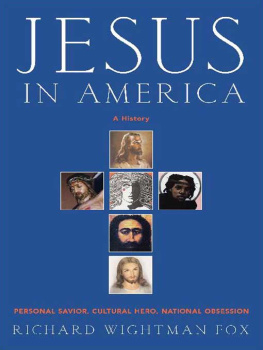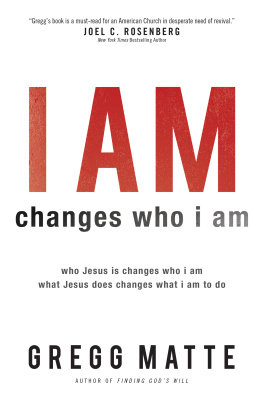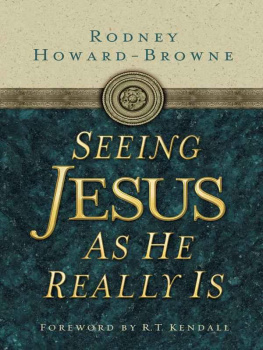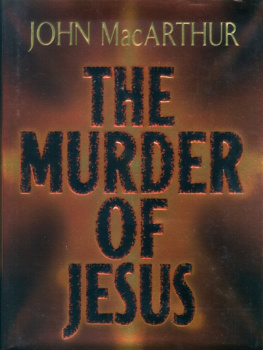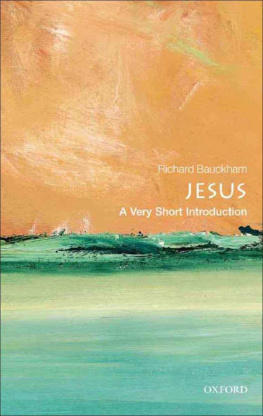THE FRUIT OF THY WOMB
I
My experience of Jesus begins with my father. An Irish-American Catholic television producer who moved my family from the East Coast to Los Angeles in 1953, Ben Fox was a man of prayer. And he wanted me to pray. Some of my earliest memories place me on the front seat of our woody station wagon, my legs bent under me, palm trees passing on either side as we rolled along, my father beaming over at me as I correctly put together a string of mysterious phrases. The rhythm of the syllables and the sound of the words made a comforting music. Glory be to the Father, and to the Son, and to the Holy Ghost. As it was in the beginning, is now, and ever shall be, world without end. Amen. I had little idea what it meant, but I figured it made sense to the parents and the priests and the nuns. What mattered was that once the phrases were linked together right, the prayer felt beautiful and held the Father and the Son close together inside of it. Like my father and me in the car when his big smile traveled acrossthe front seat from him to me and then back to him.
God was the father of Jesus, but there was that other human father, Joseph. He was a strangely uninvolved sort of father. I wondered if he was away at work all the time, the way my father was. And then there was the miraculous mother of Jesus. More moments in the car with my father as his deep voice intoned the Hail Mary, and I repeated it word for word. The mysteries of this prayer were physical and feminine. Hail Mary, full of grace, the Lord is with Thee, Blessed art thou amongst women, and blessed is the fruit of thy womb, Jesus. Was Marys womb named Jesus? What was a womb, anyway? I understood that Jesus was the plum or apricot of his mothers body. He was a delicious baby, bathed in his mothers nectar. I imagined Mary as quiet and warm like my mother, with a beautiful smile like hers. There in the car, my fathers voice carried the Hail Mary and the Glory Be as sweet opportunities to know and feel. Not everything could be understood. The two prayers seemedright just as they were, not comprehensible but not confusing either. They tied Jesus together with his Father and his Blessed Mother, and they tied all three of them together with everyone else who ever prayed the same prayers. We were all humming along on the road of prayer.
Sunday Mass was all about prayer too. At St. Martin of Tours in Brentwood I saw my blustery man-of-the-world father brought to his knees, bowing his head during the holiest part of the Mass, the Canon. The priest intoned the Agnus Dei, repeating three times in Latin the words Lamb of God, who takes away the sins of the world, have mercy on us. Then he reached the phrase Domine, non sum dignus, ut intres sub tectum meum; sed tantum dic verbo, et sanabitur anima mea (Lord, I am not worthy that Thou shouldst come under my roof; but only say the word, and my soul will be healed). I sat on the wooden pew and watched my father beating his breast three times. I watched as he worshiped Jesus and accepted what Jesus was offering: a chance to admit weakness and to hope for strength. My mother stayed home, since she was brought up Episcopalian, not Catholic. She always took my brother and me to our Catholic church when my father was away. She would sit in the pew watching and listening,not kneeling and beating her breast like the Catholics. Whenever the organ played during communion she would close her eyes to hear better. She always wished for more music. She could never get why Catholics did not want to sing as much as Episcopalians did.
When the time came to celebrate my First Communion, my father gave me a childs prayer book called Pray Always. Measuring four inches by two and a half inches, the little black leatherette book fit my hands perfectly. I was happy my father had given me this book full of holy pictures and words, just as I was glad later when he gave me an illustrated missal on my confirmation. He inscribed them both with fond words etched in his jagged handwriting. A pearl-colored crucifix was nestling in the inside cover of Pray Always with a one-inch-high gold-metal Jesus languishing on it. On the opposite page was printed a Prayer before a Crucifix whose words felt important and a little scary: With deep affection and grief of soul I ponder within myself and mentally contemplate Thy five most precious wounds; having before my eyes that which David spake in prophecy: They pierced My hands and My feet; they have numbered all My bones. I knew that the five precious wounds were theones Jesus had received during his Passion, when he was pierced in his feet, his hands, his side.
To be a child in the Catholic Church was to be aware of the suffering body. Father Murray, the pastor at St. Martins, talked about martyred saints in his sermons, how they were beaten and bloodied for Christs sake. They stood all the pain because they could talk straight to God in the middle of it. They would get a resurrected body in heaven, said Father Murray, but as I listened in the pew I was still thinking about their physical pain. If you followed Jesus, your body was going to be affected. I was not given Bible verses to memorize like Protestant children, I was not given hymns to sing, but the responses that I committed to memory from my blue paperback Baltimore Catechism, first published in 1891 and revised in 1941, taught me that agony accompanied glory: Why did God make us? To show forth His goodness and to share with us His everlasting happiness in heaven. What were the chief sufferings of Christ? His bitter agony of soul, His bloody sweat, His cruel scourging, His crowningwith thorns, His crucifixion, and His death on the cross.
I could see him suffering, in huge relief, on the life-size wooden crucifix attached to the wall behind the altar. During the hours for confession on late Saturday afternoons, the California sunshine would stream through a certain stained-glass window, casting a rich red light exactly on the wound in Christs side. His head drooped; in death he looked more sorrowful than extinguished. When I looked at his face in that afternoon light, I would think of the part of the Salve Regina that goes, To thee do we cry, poor banished children of Eve, to thee do we send up our sighs, mourning and weeping in this valley of tears. I felt sad looking at him, but the sadness had admiration and hope mixed into it.
The fourteen Stations of the Cross illustrated the story of Christs suffering in even greater detail. Painted on the sides and back walls of St. Martins, the Stations depicted his last hours. Jesus is Condemned to Die was the first Station, and Jesus is laid in the tomb was the last. They told the story of his suffering as the Roman soldiers pushed and prodded him up the path to Calvary. Simon of Cyrene helped him carry the cross, Veronica wiped his face, he said goodbye to his mother, and he met the women of Jerusalem. The ninth Station was the one that drew me in: Jesus Falls the Third Time. Those five words mesmerized me. They rang with a stark finality that made me queasy. Did Jesus actually know it was the last time he would fall? Or was he too dizzy and disoriented to know what was happening? What a terrible kind of suffering! Maybe Jesus suffered less on the cross because at least by then he knew he had reached the end of his human road (see fig. 9).

